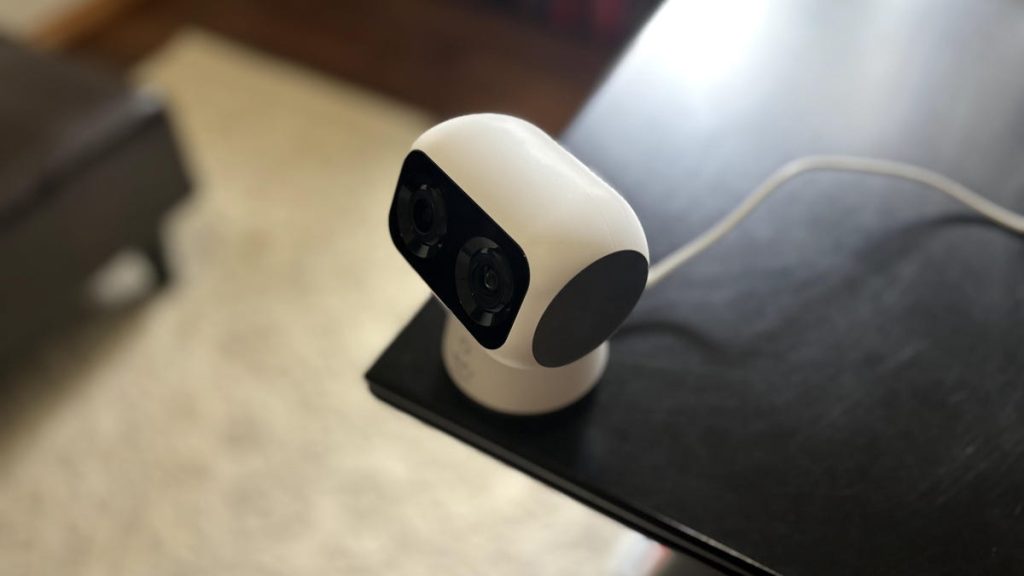Eufy’s wired S350 dual-cam indoor camera boasts a high-quality dual-cam design with excellent resolution, pan/tilt/zoom functions, and accurate object detection with tracking. It offers both local and cloud storage options, good two-way audio, and customizable alerts and routines. However, the app has been described as janky and it lacks adequate Google Home support.
The Eufy S350 indoor cam features a durable design with two lenses encased in a rounded head atop a compact base. It offers smooth pan/tilt/zoom functions and automatic tracking, with quiet and speedy movement. Installation is easy, and the setup includes a tutorial on camera placement and tuning. The camera also provides a large indicator light on the front that can be disabled if desired.
The camera’s two lenses, a 4K wide-view lens and a 2K telephoto lens for zooming, deliver excellent detail and clarity. The live view quality is unparalleled for indoor cam quality, providing great viewing potential for large spaces. The motion detection and AI tracking features work well, with the cam quick to detect and correctly identify objects. The two-way audio is effective for listening in or holding conversations within range.
While the Eufy S350 indoor cam offers a subscription service for additional features, such as emergency contact options and professional monitoring, it does not require a subscription for basic detection capabilities. The camera has a microSD card slot for local storage, with the option to customize where data is uploaded for cloud storage. There have been past issues with cloud uploads from local storage, but these were quickly resolved.
The Eufy S350 indoor cam is compatible with Amazon Alexa but may have reliability issues with Google Home integration. The camera does not work with Apple HomeKit. Overall, the Eufy S350 is praised for its detail, tracking capabilities, and reasonable price. While the app interface may be challenging to navigate, the camera’s hardware quality compensates for this drawback. CNET’s testing process involves simulating real-world scenarios to evaluate performance, usability, features, and design of security cameras.


